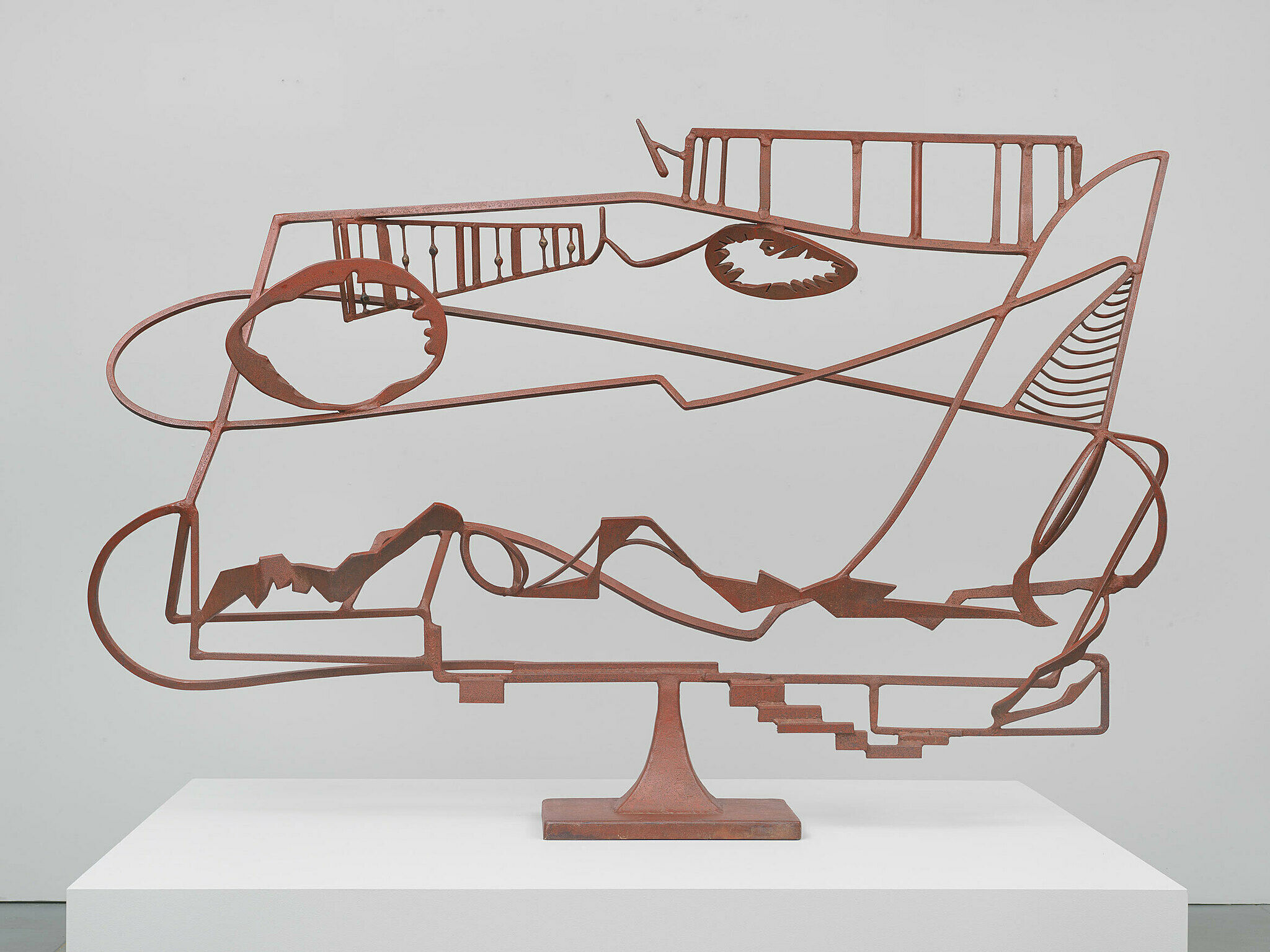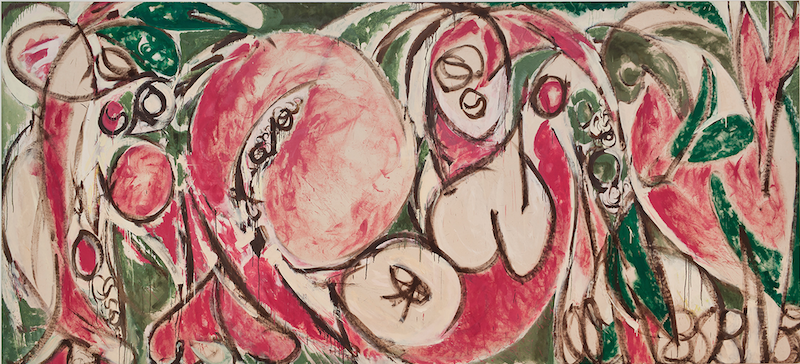Abstraction
Make a drawing of a journey
a. In The Seasons, 1957, Lee Krasner used abstract organic and plant forms to represent the cycles of nature. For Hudson River Landscape, 1951, David Smith welded pieces of found steel together, often maintaining their original shape and using their abstract forms to represent parts of the landscape, mountains, or train tracks along the river. Ask your students to look closely at these works. Can students identify shapes that might represent elements of nature or landscape?
b. Ask your students to think of a journey that they often make, such as to school, or to their home. Ask students to draw four different things they remember from that journey. Have them include both natural and manmade forms. Have students use simple outlines and shapes from their sketches and combine them into one drawing. Display and review students’ drawings. How did they combine their shapes?


